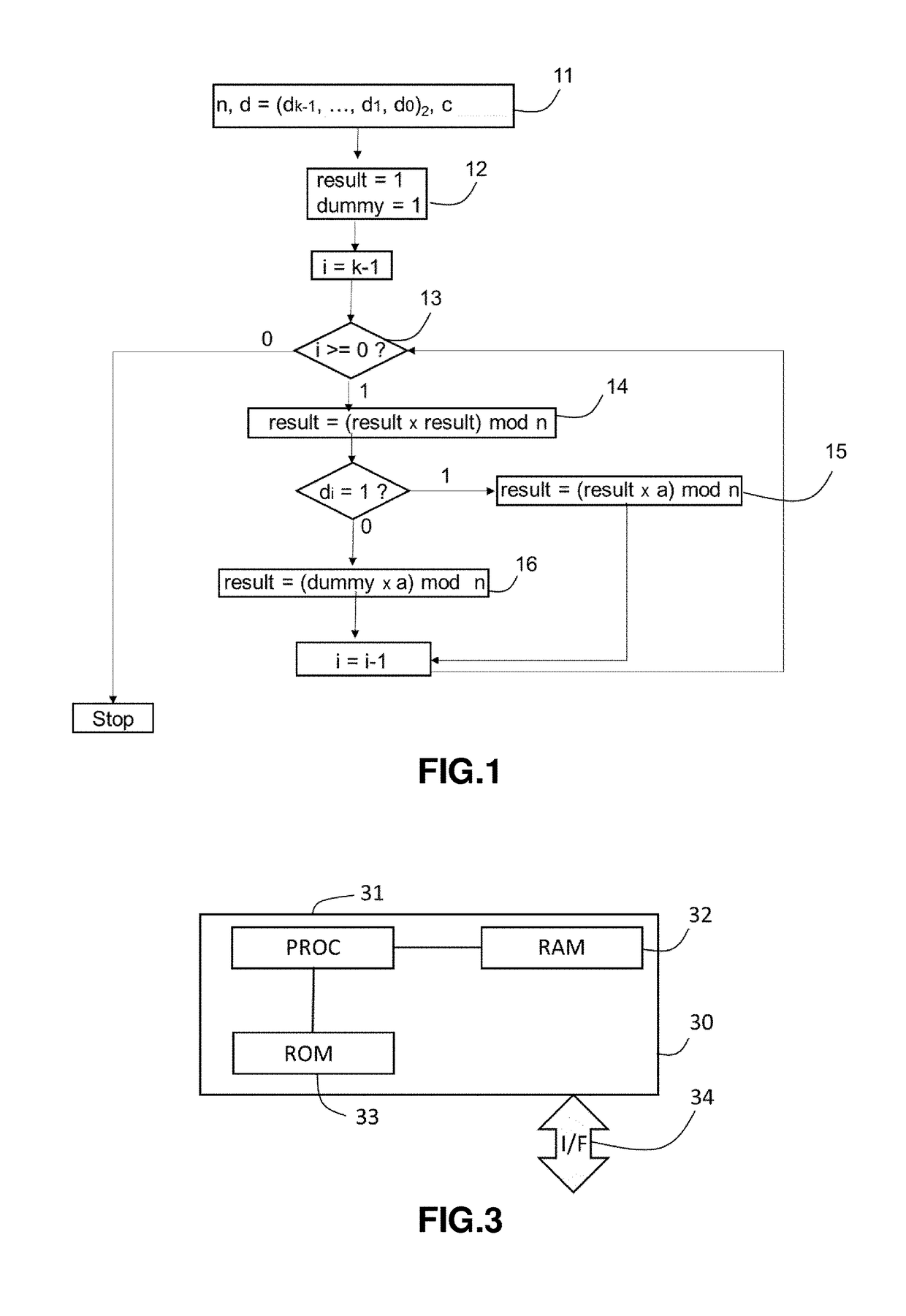Countermeasure to safe-error fault injection attacks on cryptographic exponentiation algorithms
a cryptographic exponentiation algorithm and countermeasure technology, applied in the field of countermeasure to safe-error fault injection attacks on cryptographic exponentiation algorithms, can solve the problems of significant power consumption of any computer unit, inability for an attacker to deduce the private exponent k from a known couple, and inability to run calculations in the absence of running calculations. achieve the effect of simple and efficient solution
- Summary
- Abstract
- Description
- Claims
- Application Information
AI Technical Summary
Benefits of technology
Problems solved by technology
Method used
Image
Examples
Embodiment Construction
[0076]With reference to the flow chart of FIG. 1 there will first be described an embodiment of the binary algorithm to calculate the exponentiation b=ad mod n without the proposed “Montgomery multiplication” countermeasure. Stated otherwise, FIG. 1 shows a flowchart of a method wherein a countermeasure such as “Square-And-Multiply Always”, for instance, is introduced in the binary exponentiation process.
[0077]In case of RSA encryption or decryption operation, the message a is the encrypted message c, and b is a clear text message m.
[0078]In case of DSA cryptographic system, the first message a is an integer h and the second message b is the public key y and the exponent d is the secret key x.
[0079]The algorithm according to the shown embodiment comprises the following steps 11 to 16.
[0080]At 11, various inputs used in the decryption operation are defined: these variables include the public modulus n, the private key d and the first message a.
[0081]In one embodiment, the public modu...
PUM
 Login to View More
Login to View More Abstract
Description
Claims
Application Information
 Login to View More
Login to View More - R&D
- Intellectual Property
- Life Sciences
- Materials
- Tech Scout
- Unparalleled Data Quality
- Higher Quality Content
- 60% Fewer Hallucinations
Browse by: Latest US Patents, China's latest patents, Technical Efficacy Thesaurus, Application Domain, Technology Topic, Popular Technical Reports.
© 2025 PatSnap. All rights reserved.Legal|Privacy policy|Modern Slavery Act Transparency Statement|Sitemap|About US| Contact US: help@patsnap.com


